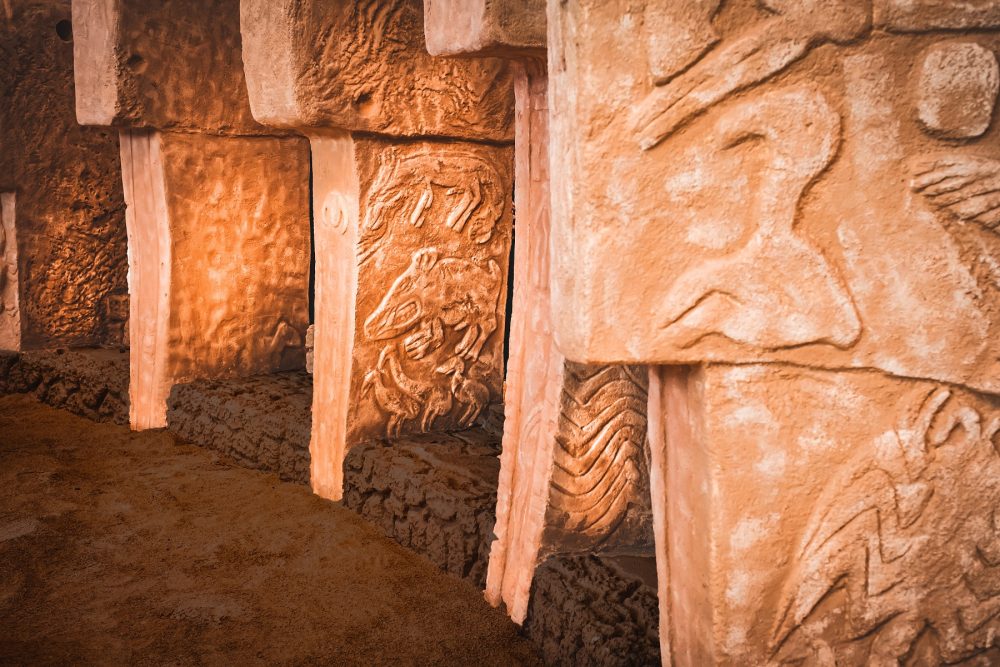The official story of human civilization begins around 6,000 years ago, with the rise of early city-states in Mesopotamia and Egypt. But new discoveries are challenging that timeline. What if we’ve overlooked an entire chapter—an era of lost civilizations before history, wiped out by a global catastrophe and forgotten beneath layers of earth, myth, and rising seas?
The mysterious climate crash that changed everything
Roughly 12,800 years ago, the Earth experienced a sudden, violent cooling event known as the Younger Dryas. Within decades, global temperatures dropped, megafauna went extinct, and entire ecosystems unraveled. No one knows exactly what caused it.
One of the most controversial theories—the Younger Dryas Impact Hypothesis—suggests that fragments of a massive comet struck Earth, triggering wildfires, floods, and atmospheric collapse. If such an impact occurred, it could have erased entire cultures in one swift blow.
But is there any trace of what may have existed before that disaster?
Göbekli Tepe wasn’t alone

The discovery of Göbekli Tepe in southeastern Turkey stunned archaeologists. This is wihtout a doubt one of my favorite sites, for many reasons. Dated to around 9600 BCE, it predates Stonehenge and the pyramids by millennia. Its massive stone pillars, many over 5 meters tall and weighing up to 20 tons, were arranged in circular enclosures—carved with animals and symbols whose meanings are still unknown.
And yet, Göbekli Tepe is not alone.
-
Karahan Tepe (Turkey), just 35 km away, is even older and features human-like statues and T-shaped pillars similar in style.
-
Nevalı Çori, buried under a modern dam, showed early megalithic architecture from around 8500 BCE.
-
Wadi Faynan (Jordan) and Ain Ghazal (Amman), both Neolithic sites, reveal complex social structures and large-scale building from 8500–7500 BCE.
-
Tassili n’Ajjer (Algeria), though harder to date precisely, holds cave paintings of beings in strange suits, possibly over 10,000 years old.
These discoveries raise a serious question: How did people with no known agriculture or writing build such monuments? Did they inherit knowledge from an earlier culture—one wiped clean from the record?
Cities beneath the sea
During the last Ice Age, sea levels were more than 100 meters lower than today. As the glaciers melted, coastlines vanished. Much of humanity’s early settlements—always near water—would now lie submerged, often beyond reach of standard archaeological tools.
And yet, some of them have been found.
-
Dwarka, off the coast of India, is an underwater city with stone walls, grids, and anchors, dated by some researchers to at least 7500 BCE.
-
Pavlopetri (Greece), a sunken Bronze Age city, features streets, buildings, and a central square—submerged around 1000 BCE, but possibly older.
-
Atlit Yam (Israel), buried beneath the Mediterranean, contains stone houses, graves, and a stone circle—dated to 7000 BCE.
These cities suggest an entire world of early human habitation may now lie underwater—unmapped, unstudied, and forgotten. We know more about the surface of Mars then the surface of our oceans. And that is a fact.
Gaps too large to ignore
Archaeology is often focused on what can be confirmed. But it’s the missing pieces that tell another story. There is a gap of thousands of years between the Ice Age and the rise of “official” civilizations like Sumer and Egypt. Yet in that gap, we find stunning stonework, monumental architecture, and sudden cultural shifts.
Even the Sphinx at Giza has been reexamined by some geologists, who point to weathering patterns consistent with heavy rainfall—rain that Egypt hasn’t seen since at least 7000 BCE. Of course this is a massive controversy and this timeline is not acepted in mainstream science.
If these structures predate what we call history, who built them?
Are myths memory?
Ancient cultures from every corner of the world carry stories of floods, sunken lands, and golden ages lost to time. The Greeks had Atlantis. The Hindus speak of long cycles of destruction and rebirth. The Sumerians recorded kings reigning for thousands of years before the flood.
For decades, such stories were dismissed as metaphor. But as more evidence comes to light, researchers are beginning to ask: Were these myths rooted in real events—the fading memories of a civilization that fell beneath the waves?
The future of the past
Advances in LIDAR scanning, satellite imagery, and underwater exploration are rapidly transforming our view of the past. New sites are being discovered in the Amazon, under jungles in Cambodia, and possibly even beneath the sands of Egypt.
As our tools improve, so do the odds of finding proof—of cities that came before, of cultures lost to sea and flame, and of a history far deeper than textbooks allow.
What if we’re the second or third version of civilization?
What if everything we’ve built rests on the bones of a world we’ve already lost? The clues are mounting—and the silence between them might be the loudest signal of all. Did lost civilizations before history disappear in a global catastrophe? From sunken cities to ancient monuments, new clues suggest we’ve barely scratched the surface. And what if we are just a second or ever thrid version of civilization. But more on that, in a different article.











